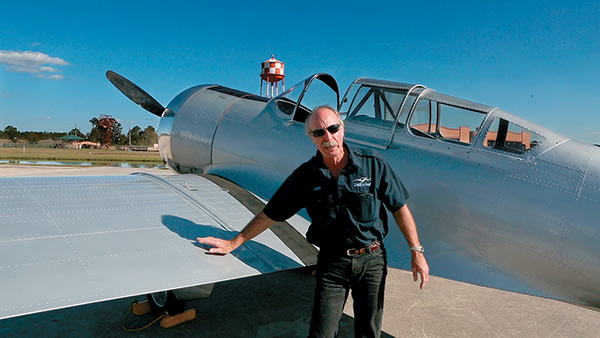
The Curtiss-Wright CW-19 is a rare representative of the transitional days when U.S. aviation stepped fully into the mid-20th century. A sleek metal monoplane with streamlined landing gear, the CW-19 first flew in 1935 and followed a series of utterly conventional single-engine, fabric, mostly open-cockpit Curtiss biplanes—plus the anomalous Curtiss Condor airliner, which was what the DC-3 might have looked like with an extra set of wings. Curtiss-Wright was jumping feet first into the era of advanced airplanes: Its very next design was the huge Curtiss Commando transport.
Designed as a civil market two-seat Coupe, as it was originally termed, the CW-19 was introduced with an inadequate 90-hp Lambert radial. Private pilots had no use for it, so the Coupe was quickly militarized as the -19R, with a tandem, sliding-canopy greenhouse and provision for a couple of machine guns and small underwing bomb racks. It mounted a variety of reasonably powerful engines, culminating in the 450-hp Wright R-975. The intended market was second-world countries that wanted an economical light fighter, trainer and ground-attack airplane. Some 30 were sold to China as well as a number of South American and Caribbean countries.
Kermit Weeks and his Fantasy of Flight crew in Polk City, Fla., recently put one of the few surviving CW-19s back into the air. An ex–Bolivian air force machine, it fortunately required only the replacement of oil and fuel lines and some landing-gear adjustments by the time Weeks first flew it. The CW-19 has unusual a-little-bit-retractable landing gear. When the airplane is on the ground, its weight pushes the wheels up into the large “trouser” fairings, into their takeoff-and-cruise position, and this compresses a shock-absorbing spring. An up-lock pin holds the wheels in place until the flaps are cranked down, which pulls out the pins and allows the wheels to fall about 6 inches, thus extending the spring and making for remarkably soft landings.
Weeks also has a CW-22, a retractable-gear CW-19R follow-on. The U.S. Navy operated more than 300 of these as the SNC-1 Falcon advanced trainer, one of which is now in Weeks’ hangar. The CW-19 and -22 were the beginning of the line that ultimately led to the Curtiss P-40 Warhawk. “When you see the construction and layout of those two airplanes, you can see the lineage of what followed,” Weeks says. Though there are currently no plans to get the CW-22 back into the air, he enjoys owning what he calls “the complete set.”
In March Weeks announced that he was closing his museum on April 6, but plans to develop a “new future destination attraction.” For now the facility will focus on aviation restoration, maintenance and private event business.




